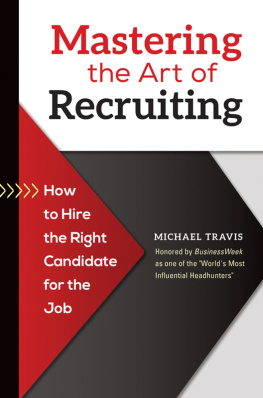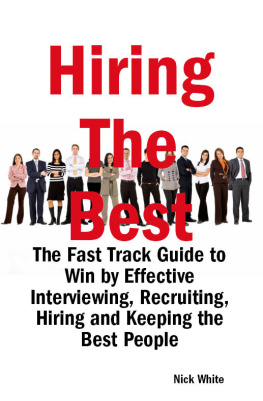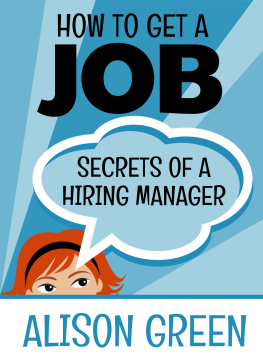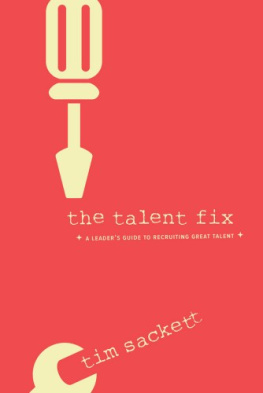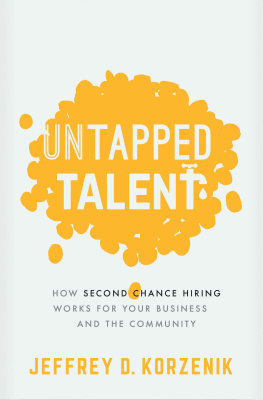Mastering the Art of Recruiting
Mastering the Art of Recruiting
How to Hire the Right Candidate for the Job
Michael Travis

Copyright 2015 by Michael Travis
All rights reserved. No part of this publication may be reproduced, stored in a retrieval system, or transmitted, in any form or by any means, electronic, mechanical, photocopying, recording, or otherwise, except for the inclusion of brief quotations in a review, without prior permission in writing from the publisher.
Library of Congress Cataloging-in-Publication Data
Travis, Michael, 1962
Mastering the art of recruiting : how to hire the right candidate for the job / Michael Travis.
pages cm
Includes bibliographical references and index.
ISBN 978-1-4408-3144-7 (print : alk. paper) ISBN 978-1-4408-3145-4 (e-book)
1. EmployeesRecruiting. 2. Employee selection. 3. Personnel management. I. Title.
HF5549.5.R44T73 2015
658.3111dc23 2014028324
ISBN: 978-1-4408-3144-7
EISBN: 978-1-4408-3145-4
19 18 17 16 15 1 2 3 4 5
This book is also available on the World Wide Web as an eBook.
Visit www.abc-clio.com for details.
Praeger
An Imprint of ABC-CLIO, LLC
ABC-CLIO, LLC
130 Cremona Drive, P.O. Box 1911
Santa Barbara, California 93116-1911
This book is printed on acid-free paper 
Manufactured in the United States of America
For my father, John Travis
Contents
Great-Aunt Colette left her life as a snake charmer with Ringling Brothers to become a fortune-teller on the boardwalk in Atlantic City. Dressed in a flowing robe and a turban, she peered into a crystal ball and saw the future.
I didnt inherit any of my aunts soothsaying ability, if she had any, but I am confident making this prediction:
Finding great people is your number-one business problem.
That may seem like a bold statement since I know nothing about you or your company, but its a safe bet. All of us whove spent time in the corporate world know that acquiring and keeping talent is the number-one problem for every business. No matter what industry youre in or where you sit in the organization, identifying, recruiting, and retaining the very best people is your top priority. More than any other factor, talent is the key to exceptional performance.
Companies that have mastered the acquisition of talent enjoy a huge advantage. Their superior people design more innovative products, manufacture with higher quality, sell and market more effectively, and generally run circles around their competitors.
Mastering the Art of Recruiting is for executives who want to take their hiring performance to the next level. It will also be of interest to savvy up-and-coming managers who understand that hiring great people will speed their advancement to the executive level. If you are committed to improving the quality of your hires, this book will help you, and if you apply the principles in this book consistently over time, you will put yourself on the fast track to becoming a recruiting master.
This book is more than just a tool for your own professional development. If you put it into the hands of the managers in your group, it will help improve hiring throughout your entire organization.
The Heavy Price of Bad Hires
It will come as no surprise that most companies fail to achieve passing grades when it comes to recruiting. One study showed that 40 percent of new hires fail within eighteen months, and other estimates are even higher.
This dismal state of affairs exacts a very high price. Direct costs of a bad hire (recruiting fees, relocation, training, severance, and more) can total two or three times the new hires annual salary, but those arent the only losses. Indirect costs, such as lost opportunity and lost productivity due to disruption of the organization, while harder to quantify, can easily be several times direct costs. Bad hires, especially at the executive level, are a financial disaster.
What about the cost to executives who repeatedly make bad hires? Quite simply, the inability to build a great team can end a career, or at least leave it stuck in neutral. Executives who want to advance must master the fundamental skill of recognizing and attracting top people.
Given the critical importance of recruiting and the epidemic of bad hires, it would be natural to assume that companies are working hard to improve the hiring skills of their employees. Surprisingly, thats not the case. Most companies provide little to no education on recruiting for their young hiring managers, and when they do its often narrowly focused on employment law and human resources policies instead of how to make the right selection. Utterly unprepared, new managers are thrown into the deep end of the pool and expected to swim.
My experience was fairly typical. As an inexperienced manager at a small high-tech company, I knew nothing about hiring, and like many ambitious young people I had no idea how ignorant I was. My employer, like most, didnt see the need to teach the basics of recruiting. What little instruction we received was about HR policies.
So when it came time to make my first hire, I forged ahead blindly. Everyone else in the company seemed to think I should know how to do this stuff, so I didnt ask for help, though I desperately needed it. I ended up with a marginal hire. That was better than I deserved, given my poor hiring skills and the shoddy process I had run, but much less than I needed.
Notably, the human resources director who was allegedly supporting me did very little to help. She assisted with the administrative aspects of the hire, but gave no direction on interviewing, references, or any of the other steps that are important to selecting the right candidate. In hindsight, its clear she didnt provide that help because she couldnt. She was inexperienced herself, and like many in HR management she was drowning in administrative minutiae and out of touch with the things that mattered to the business.
How bad can it get? Heres an example thats amusing because it is so extreme. A friend related a story that happened in his workplace. (As with all anecdotes in this book in which companies are not identified, details have been changed to make the businesses and individuals unidentifiable. In other words, if you think you recognize someone, youre wrong.)
A young biotech company with a promising new technology needed to hire a new head of regulatory affairs. Regulatory affairs is a mission-critical function in life sciences companies because it defines the strategy for winning regulatory approval and manages relations with the Food and Drug Administration (FDA).
The CEO identified a candidate who was aggressive and very smart. They hit it off right away, and thereafter nothing could deter the CEO from proceeding with the hire at full speed, despite the vice president of human resources protestations that something wasnt right. After a cursory reference check, the CEO extended an offer, and the new vice president joined the company.
It wasnt long before trouble started. The new executive screamed at his staff. When traveling, he was always accompanied by his female assistant, who appeared to be helping in ways that violated company policy. The company should have dismissed him immediately, but despite the obvious dysfunction they kept him on.
Surely they regretted their inaction later, when (largely due to the failed vice presidents mismanagement) the FDA rejected the companys application to market its drug. Over a period of years, the firm withered away, suffering the corporate equivalent of the death penalty. The CEO who made the hire was fired, and his career never recovered from the high-profile failure.
Next page
